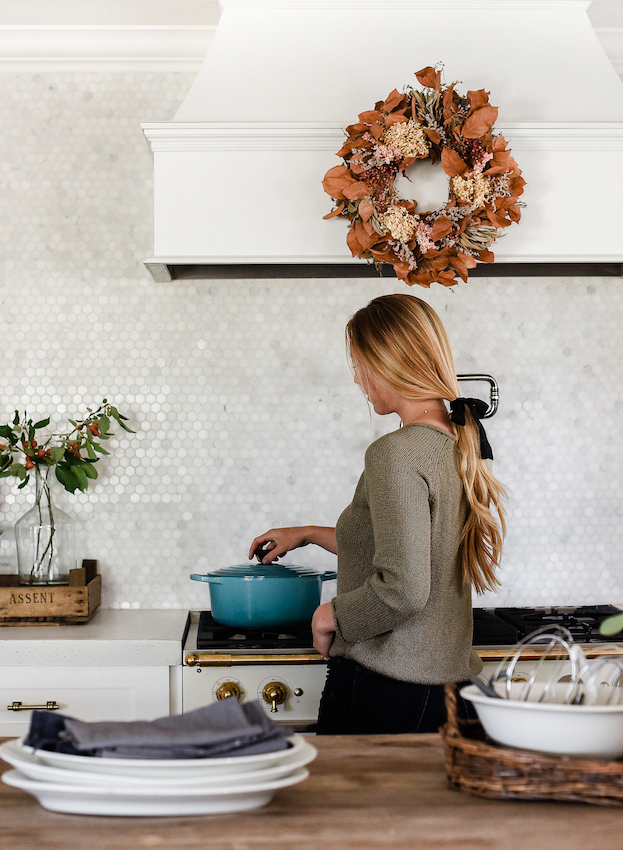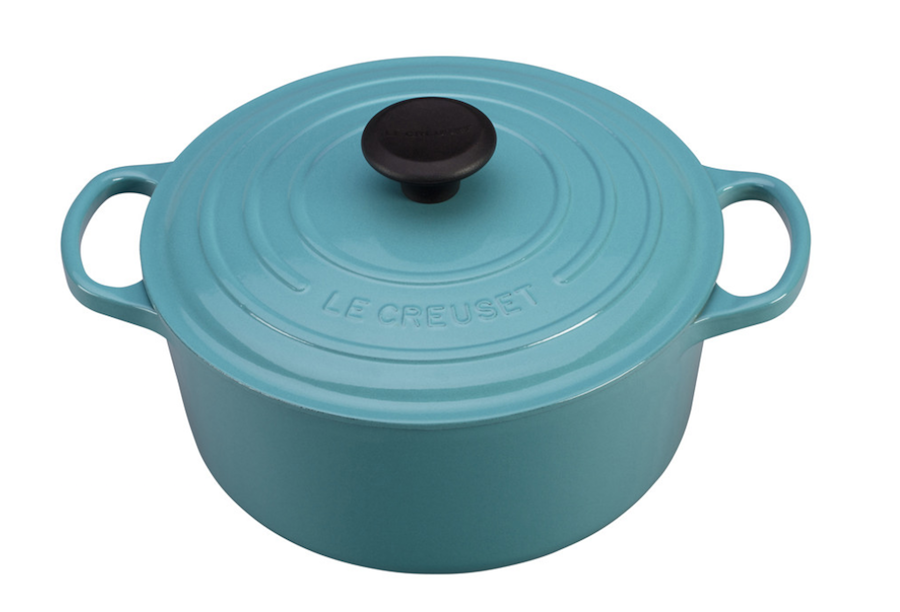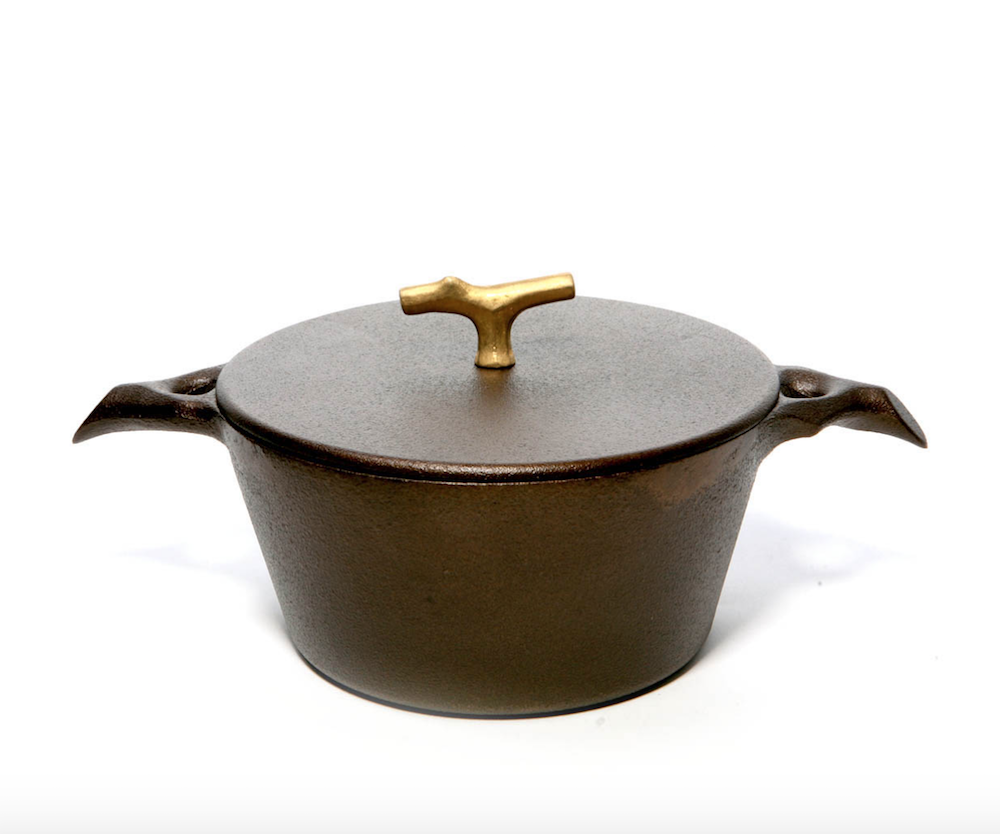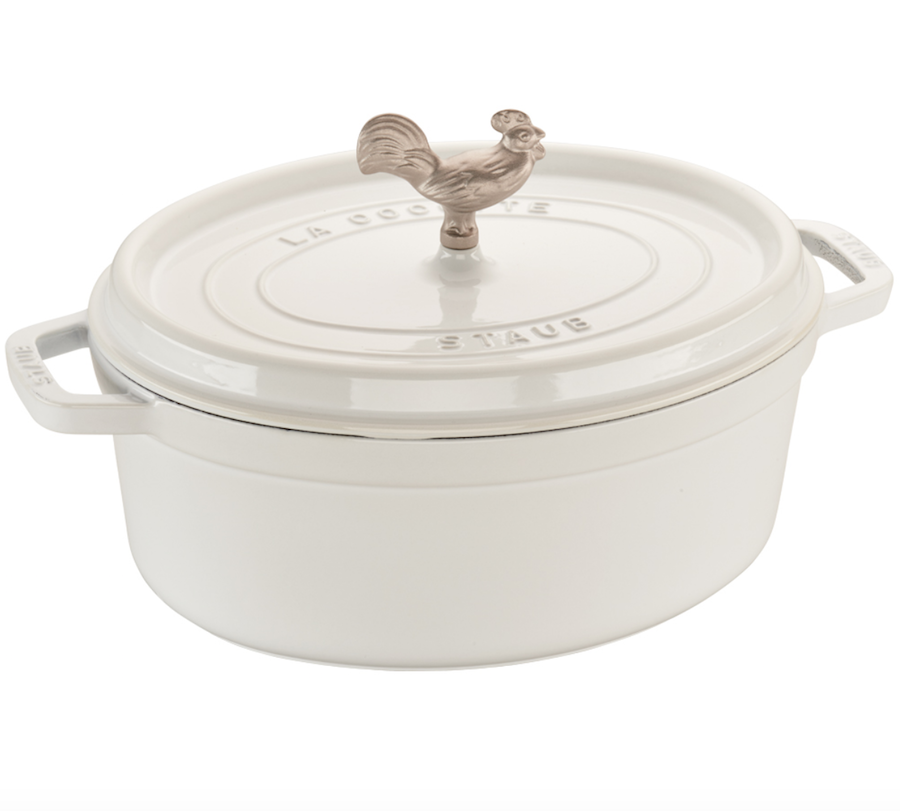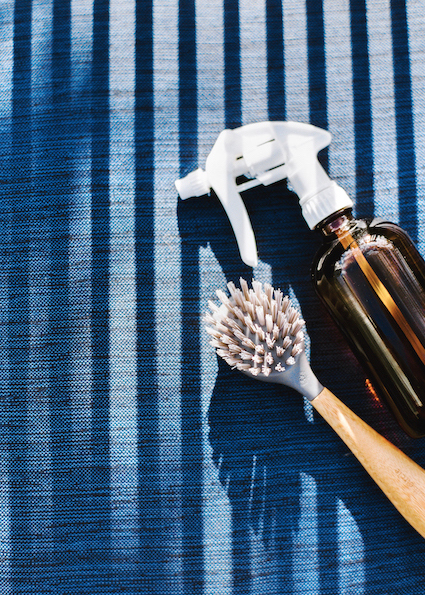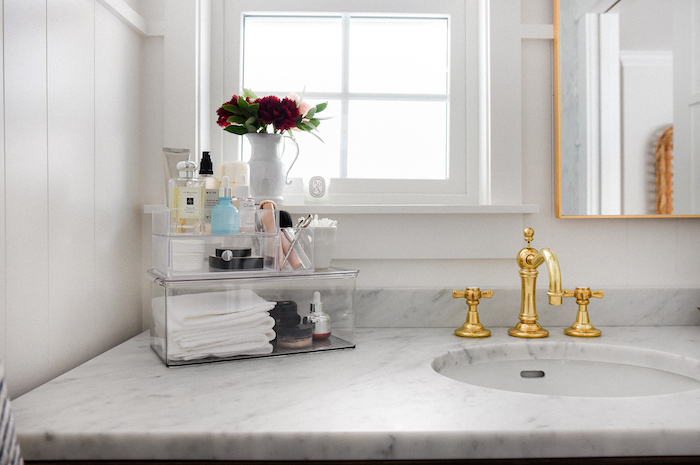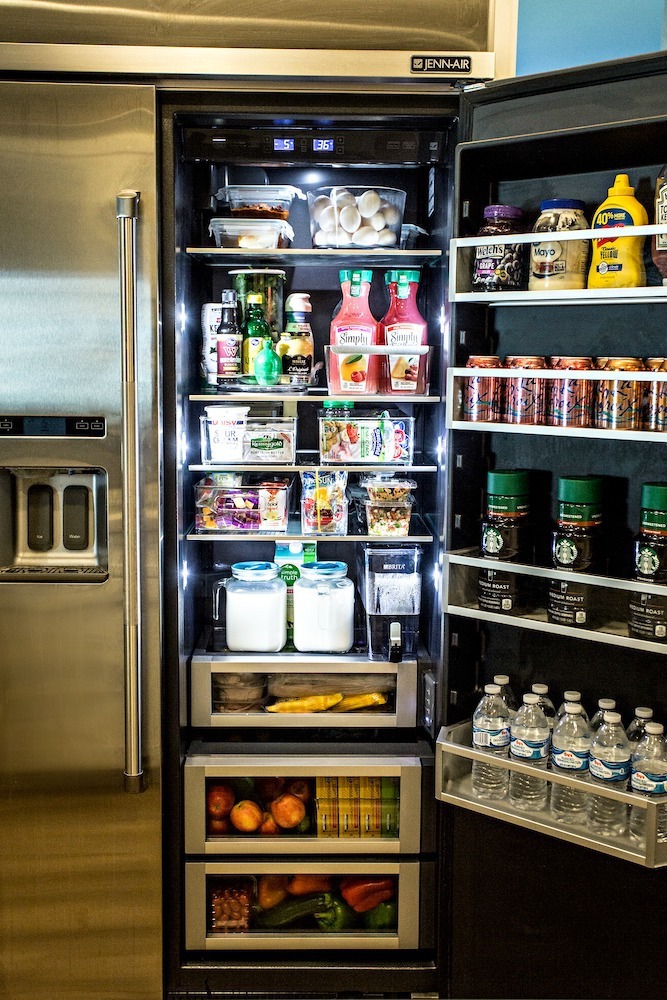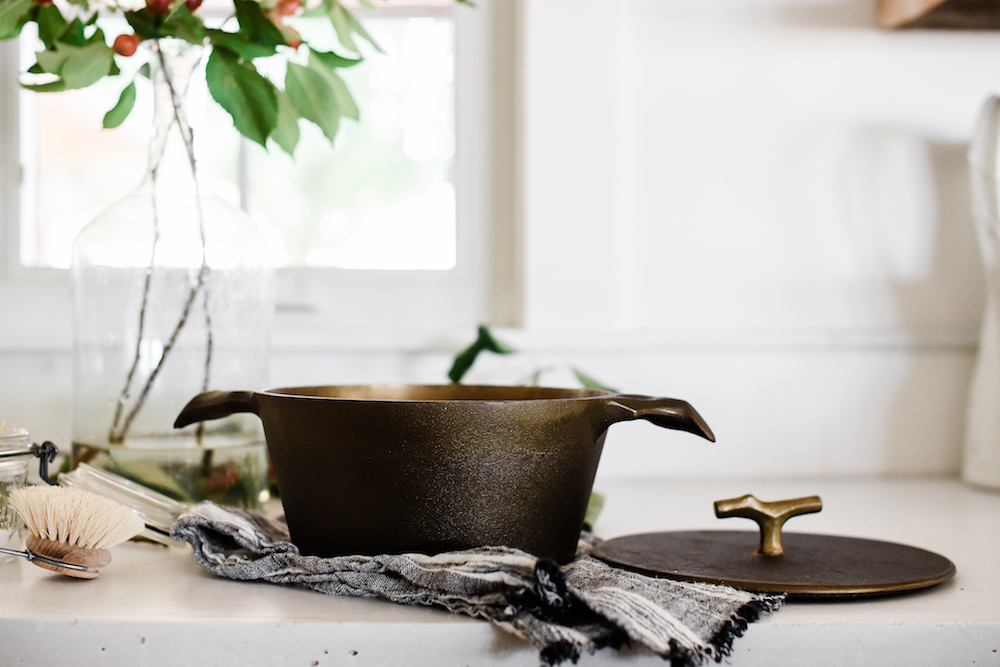
A Dutch oven is one of the most versatile pieces of cooking equipment you can own in your kitchen – you can use one to bake bread, bake a cake, sear meat, simmer stew – the list goes on and on. If you only splurge on one thing in the kitchen, this is a great option.
What is a Dutch oven?
A Dutch oven is simply a thick-walled pot used for cooking a variety of things. Dutch ovens have a tight fitting lid and are made of cast-iron, cast-aluminum, or ceramic. The beauty of a Dutch oven is its’ “seasoning”; some come pre-seasoned with an enamel finish, while some will require you to season them yourself.
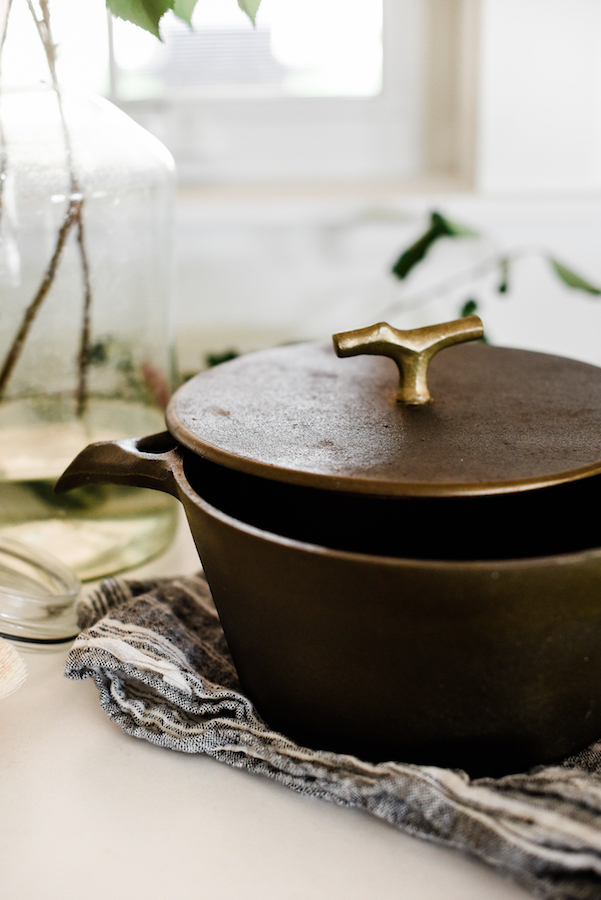
A Dutch oven is an amazing tool in the kitchen because it is so versatile. The metal can withstand high temperatures and retains heat (and cool) very well. You can use a Dutch oven in your traditional oven, on a grill, or on a cooktop without worrying about it being able to withstand the elements. You can even chill a Dutch oven ahead of time to use as a vessel to keep food cool — really, they’re just wonderful little things.
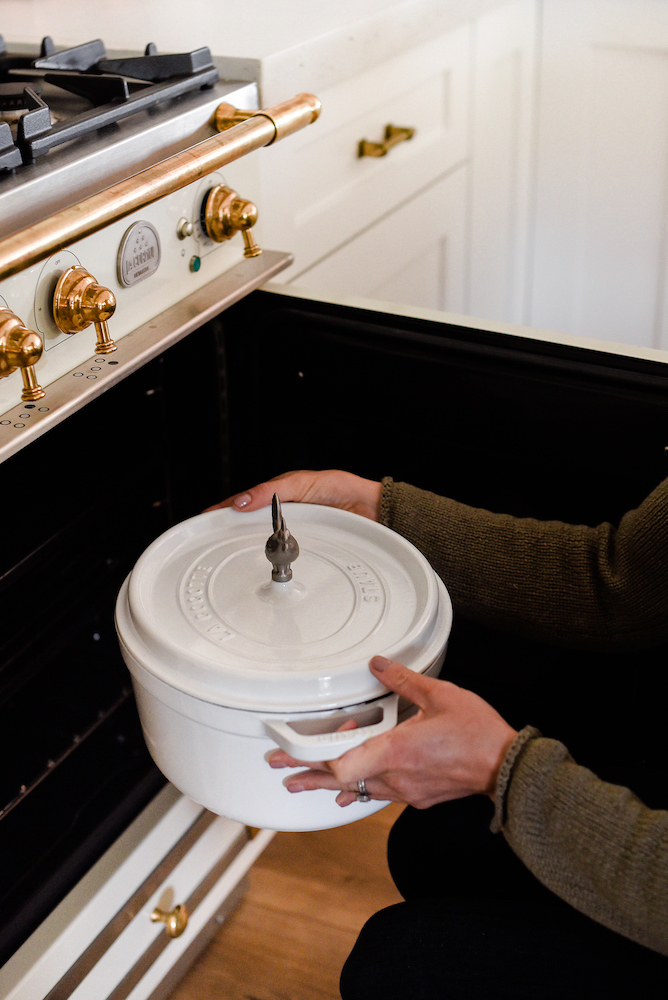
So what’s different about cooking in a Dutch oven? Not much! If your Dutch oven is made from cast iron (most are), it might take a little longer to heat up. It is recommended that you do not “dry cook” anything in a Dutch oven; make sure to add a little liquid (oil works great!) to the bottom of the pan before cooking in it. Keep in mind, the lid is tight fitting and creates a bit of a self-basting system, trapping steam and heat, this is particularly delicious when making stews and casseroles.
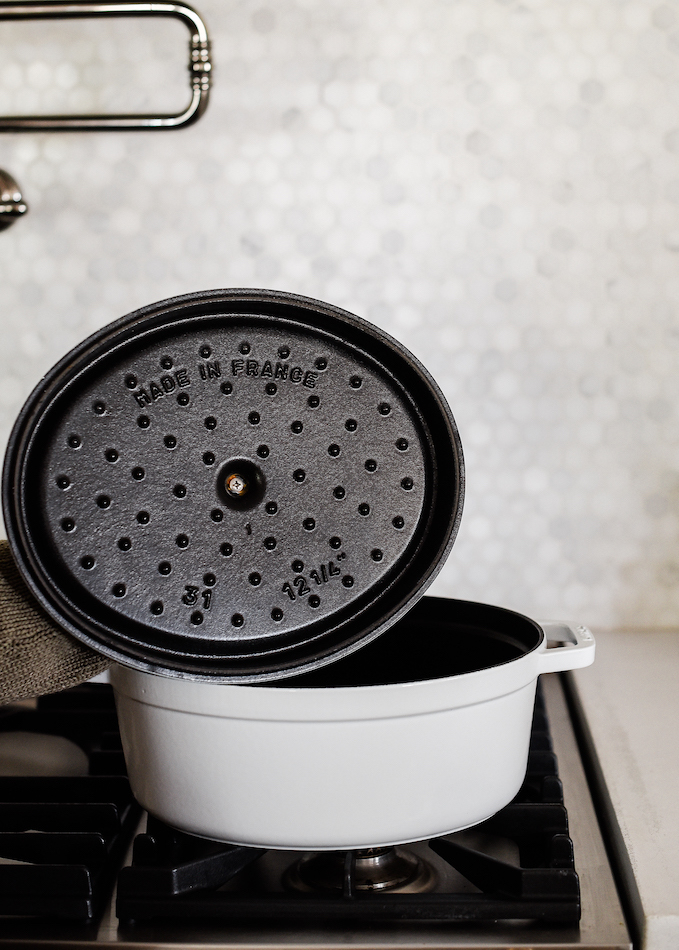
How to care for a Dutch oven:
While cooking in a Dutch oven doesn’t require any special skills, taking proper care of it is imperative for the longevity of this amazing kitchen tool. This is especially true if your Dutch oven is seasoned by hand rather than with enamel.
It’s important to develop a proper seasoning because cast iron will rust and cause food to stick when unseasoned. Brands like Le Creuset and Staub are forever-seasoned with enamel. The enamel is very durable and is even dishwasher safe. However, if your Dutch oven is made of cast iron without enamel, you will need to season the pan with fat (such as lard or oil) followed by a period of high heat (400-500 degrees). This seasoning is durable and will create a beautiful non-stick cooking surface – once done properly, the seasoning will last for a very long time!
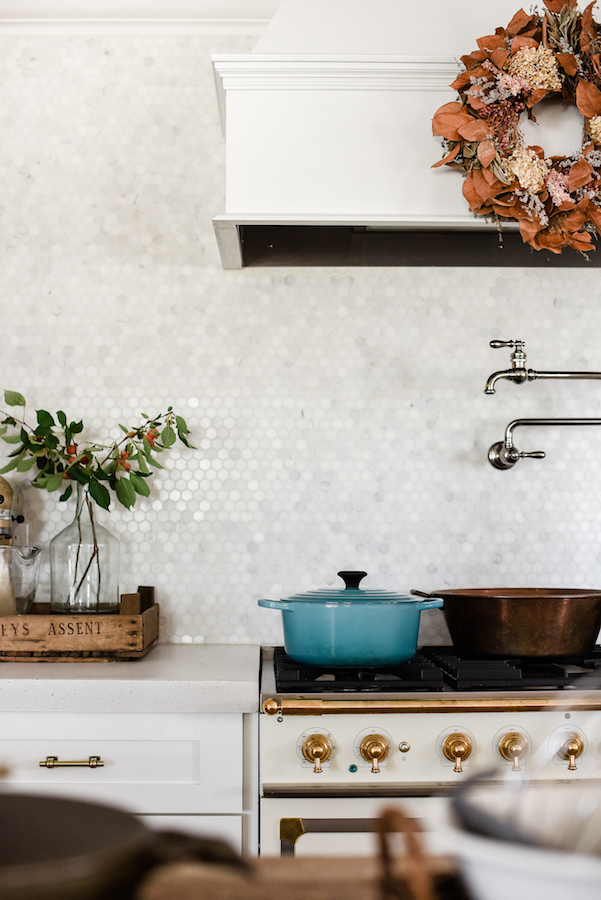
To season a cast iron Dutch oven: rub any type of oil (olive is great) or lard all over the pan, think of this as massaging the oil into the iron. Then, the pot must be heated; ideally above 400 degrees for about an hour, allow it to cool in the oven. While this is a great start to a seasoned cast iron oven, there’s no quick way to get a great seasoning. Seasoning will happen over time!
Washing a Dutch Oven:
Care for a Dutch oven differs greatly depending upon the seasoning of the pot. If your Dutch oven is enamel coated, the pot is incredibly durable, and is even dishwasher safe. To clean an enamel-coated Dutch oven, use soapy water and a nylon brush to scrub away any food debris. Make sure you allow the pot to cool before washing as thermal shock can occur and damage the enamel.
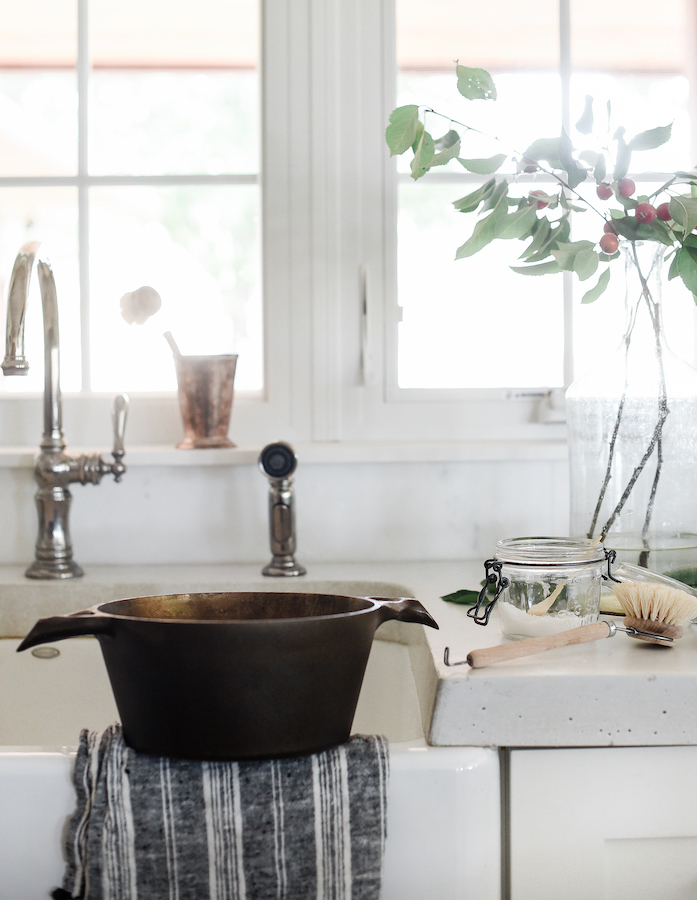
If your Dutch oven is seasoned with fat rather than with enamel, you should take great care in protecting the seasoning. Many manufacturers recommend only using soap as a last resort when absolutely necessary. For everyday cooking, you can simply use a spatula to scrape up any food bits, then wipe away the debris with a cloth.
Salt is also a useful cleaning agent in lieu of soap! Use hot water and salt to clean the oven when necessary, but remember to never soak a cast iron Dutch oven!
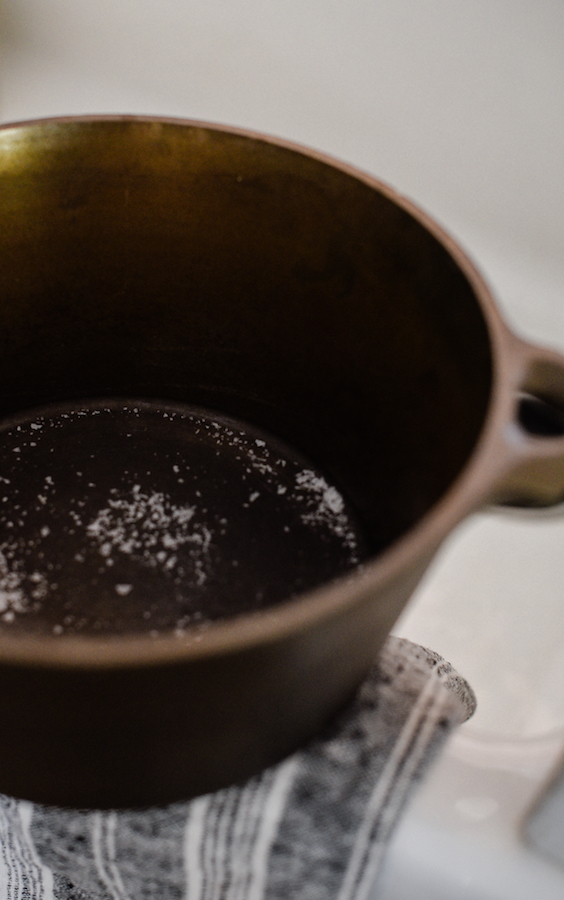
If you have a very stubborn mess — try cleaning the Dutch oven on the stovetop! Add about an inch of water and boil until the food softens. Use a spatula to scrape up what you can, then drain the water and use a nylon brush to finish cleaning. Whenever you use water or soap, make sure to massage a few drops of oil into the pan to protect the seasoning.
As you use your cast iron Dutch oven, the seasoning will build into a beautiful non-stick surface that requires less cleanup and care! It is a beautiful kitchen tool that can be passed down from generation to generation!
